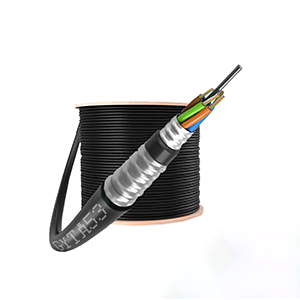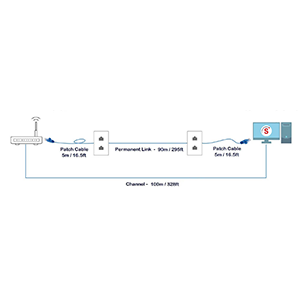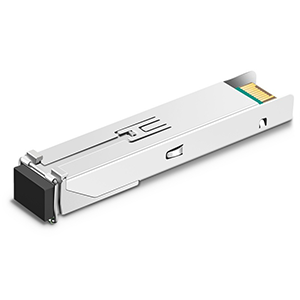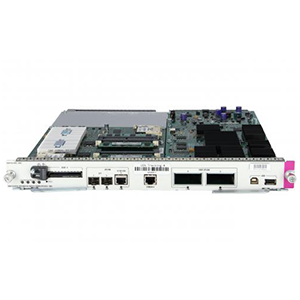Hello everyone! Today I want to share with you a component that plays an important role in high-performance fiber optic transmission – Loose Tube Fiber. As a key component in achieving stable and efficient optical fiber transmission, Loose Tube Fiber plays an important role in protecting and managing optical fibers. In this article, I will take you to have an in-depth understanding of the definition, structure and advantages of Loose Tube Fiber, allowing you to better understand its importance and advantages in optical fiber communications.
Basic overview of Loose Tube Fiber
Loose Tube Fiber is a fiber protection and management technology commonly used in fiber optic communication systems. The following is a basic introduction to Loose Tube Fiber:
Definition and principles:
- Loose Tube Fiber refers to placing optical fiber in a loose tube-like structure, usually made of special materials, such as polyethylene (PE) or polypropylene (PP).
- This loose tube structure provides protection and management of the fiber, making it resistant to mechanical stress and temperature changes in the external environment.
- Each fiber in a loose tube fiber is placed in a separate small tube, which is usually filled with filler to provide additional protection and buffering.
The role and importance in optical fiber communication systems:
- Protecting optical fibers: Loose Tube Fiber provides physical protection for optical fibers to prevent them from being damaged by mechanical stress, extrusion or tension in the external environment.
- Buffering and management: The small tubes and fillers in the loose tube structure provide buffering and management, reducing the bending radius and tension of the optical fiber, making the optical fiber less susceptible to damage when bending and stretching.
- Resistant to temperature changes: The structure of Loose Tube Fiber has a certain degree of thermal expansion, which can relieve the stress of the optical fiber when the temperature changes and keep the performance of the optical fiber stable.
Loose Tube Fiber’s advantages in protecting and managing optical fibers:
- Mechanical Protection: By placing the fiber in a loose tube structure, Loose Tube Fiber protects the fiber from external mechanical stress and physical damage.
- Environmental adaptability: The loose tube structure of Loose Tube Fiber has good water resistance, corrosion resistance and UV radiation resistance, and is suitable for optical fiber communication systems under various environmental conditions.
- Flexibility and scalability: Each small tube can accommodate multiple optical fibers, so Loose Tube Fiber is flexible and scalable and suitable for applications that need to accommodate multiple optical fibers.
In short, Loose Tube Fiber, as an optical fiber protection and management technology, plays an important role in optical fiber communication systems. It ensures the reliability and stability of optical fiber by providing mechanical protection, buffering and management of optical fiber. Its advantages include mechanical protection, environmental adaptability, and flexibility and scalability, making it a popular choice in fiber optic communications systems.
What are the structures and characteristics of Loose Tube Fiber
Loose Tube Fiber has specific structure and characteristics. The following is a detailed introduction to its structure and characteristics:
Structure and components:
- Outer Jacket: The outside of Loose Tube Fiber is a loose tube structure wrapped by an outer jacket. The outer sheath is usually made of materials such as polyethylene (PE) or polypropylene (PP), which has good mechanical protection and environmental resistance.
- Loose Tube: The optical fiber is placed inside the loose tube. Loose sleeves are usually made of materials such as polyethylene (PE) or polypropylene (PP), which have high flexibility and cushioning properties.
- Filling Compound: The voids inside the loose sleeve are usually filled with filler, such as gel or silicone, to provide additional protection and cushioning. The filling also prevents moisture from getting inside the loose sleeve.
Loose tube structure and material properties:
- Loose tube structure: The loose tube structure of Loose Tube Fiber refers to placing optical fibers in a relaxed tubular structure, and each optical fiber is independently wrapped in a small tube. This structure makes the optical fibers relatively independent and reduces the mutual influence between optical fibers.
- Material characteristics: Loose sleeves are usually made of materials such as polyethylene (PE) or polypropylene (PP). These materials have good flexibility, wear resistance and weather resistance, and can resist mechanical stress and temperature changes in the external environment.
Anti-twisting, pressure-resistant and waterproof properties:
- Anti-twisting performance: The loose tube structure of Loose Tube Fiber gives it high anti-twisting performance. Even when bent or stretched, optical fibers can still remain relatively independent, reducing mutual interference between optical fibers and ensuring stable optical fiber transmission performance.
- Pressure resistance: The loose tube structure and the presence of filler provide additional cushioning and protection, giving Loose Tube Fiber high pressure resistance. This helps prevent damage to the fiber from external pressure, especially in underground or extruded environments.
- Waterproof performance: The use of filler and the waterproof material of the outer sheath give Loose Tube Fiber good waterproof performance. This means that even in humid or humid environments, moisture has difficulty penetrating inside the loose tube, protecting the optical fiber from moisture corrosion and damage.
From the above we can easily see that Loose Tube Fiber adopts a loose tube structure, which is composed of an outer sheath, a loose tube and a filler. It has excellent characteristics such as anti-twist, pressure resistance and waterproof, and can provide reliable protection and management in optical fiber communication systems, ensuring stable performance and long life of optical fibers.
Application fields of Loose Tube Fiber
Loose Tube Fiber (loose tube fiber) has a wide range of applications in various fields. The following are application cases of Loose Tube Fiber in different fields:
Long-distance optical fiber transmission: Loose Tube Fiber is often used in long-distance optical fiber transmission systems, such as optical fiber communication trunk networks. Its loose tube structure and filler provide protection and buffering of the optical fiber, allowing stable signal transmission. In addition, the pressure resistance of Loose Tube Fiber also makes it suitable for withstanding external pressure during long-distance transmission.
Submarine optical cable: Loose Tube Fiber is widely used in submarine optical cable systems. Due to the harsh submarine environment, optical cables need to be able to withstand factors such as high pressure, moisture, salt corrosion and temperature changes. The loose tube structure and waterproof performance of Loose Tube Fiber enable it to transmit signals stably in the submarine environment, ensuring the reliability of submarine communications.
Outdoor network cabling: Loose Tube Fiber is also commonly used in outdoor network cabling, such as metropolitan area networks, campus networks, and telecommunications base stations. In the outdoor environment, optical fiber will face various challenges such as wind and rain, temperature changes, and physical extrusion. The loose tube structure and mechanical protection performance of Loose Tube Fiber can protect the optical fiber from damage to the external environment and ensure the stability and reliability of the network.
The importance of stable transmission of Loose Tube Fiber in harsh environments is reflected in the following aspects:
- Signal stability: In harsh environments, such as high temperature, low temperature, humidity, vibration, etc., the loose tube structure and filler of Loose Tube Fiber provide good buffering and protection, ensuring the stability of optical fiber transmission signals.
- Long-term reliability: Optical fiber transmission systems in harsh environments often require long-term operation, and the design and material selection of Loose Tube Fiber give it high durability and long life, and can work stably in harsh environments.
- Reduced maintenance costs: Loose Tube Fiber’s stable transmission in harsh environments reduces the need for maintenance and repair, reducing network operating costs.
So, Loose Tube Fiber is widely used in the fields of long-distance optical fiber transmission, submarine optical cables and outdoor network cabling. Its stable transmission capability in harsh environments is crucial to ensuring signal reliability and the continued operation of the network.
How to install and maintain Loose Tube Fiber
Installing and maintaining Loose Tube Fiber requires attention to the following key steps and precautions:
Installation notes:
Preliminary planning: Carry out adequate planning and design before installation, including determining the optical cable path, connection points, and terminal equipment locations. Ensure that the cable length, number of loose tubes, and fiber bend radius meet the manufacturer’s specifications.
Safe Operations: During installation, it is important to follow safe operating procedures, including wearing appropriate personal protective equipment, ensuring the work area is safe, and avoiding damage to fiber optics and other equipment.
Cable handling: Properly handle fiber optic cables to avoid stretching, twisting, or excessive bending. Use proper tools and techniques to avoid damage to fiber optics. Take care to protect optical fibers and loose tubes from dust, moisture, and moisture.
Connection precautions: Before connecting the optical fiber, ensure that the end faces of the optical fiber and connector are clean to avoid contamination by dust or dirt. Use appropriate connectors and tools for fiber optic connections, and perform quality testing to ensure connection quality.
Maintenance precautions:
Periodic inspection: Regularly inspect the fiber optic cable system, including outer sheaths, loose tubes and connectors. Check for external damage or wear, such as cracks, scratches, or exposed optical fibers. Make sure all connectors and joints are tight and check if any are loose or detached.
Cleaning and Protection: Clean the end faces of fiber optic cables and connectors regularly, using appropriate cleaning tools and solvents. Avoid using materials that are worn or scratched. Maintain the integrity of the optical fiber loose tube and prevent the intrusion of moisture and dust.
Troubleshooting: If a fiber optic transmission failure occurs, first check the connectors and splices to make sure they are properly connected and not damaged. Use test equipment such as optical power meters and optical time domain reflectometers to identify and locate fault points. Repair or replace faulty parts as necessary.
The importance of properly installing and protecting Loose Tube Fiber:
- Proper installation and protection of Loose Tube Fiber can ensure the reliability and stability of optical fiber transmission and reduce the occurrence of signal loss and failures.
- Proper installation and protection can extend the life of fiber optic cables and fibers, reduce maintenance and repair costs, and improve network performance and user satisfaction.
FAQs and troubleshooting:
Signal attenuation or loss: It may be caused by poor connectors, damaged optical fibers, damaged loose tubes, or pressure on the optical cables. Check the quality of connectors and splices, check whether the optical fiber is intact, ensure the integrity of the loose tube, and check whether the optical cable is subject to external pressure.
Fiber breakage: It may be caused by excessive bending of the optical cable, tension exceeding the allowable range, or damage to the loose tube. Check the routing and bend radius of the fiber optic cable to ensure it meets the manufacturer’s specifications. Repair or replace damaged loose tubes and optical fibers.
3. Other common problems and troubleshooting methods include:
Fiber contamination: Contamination of fiber end faces or connectors with dust, grease, or other contaminants may cause signal quality to deteriorate. Clean fiber end faces and connectors regularly, using appropriate cleaning tools and solvents.
Influence of temperature changes: Extreme temperature changes may cause the optical fiber loose tube to expand or contract, causing fiber tension or connector loosening. Use thermally stable loose tubes and connectors, and ensure that the fiber optic cable installation meets the temperature range requirements.
Humidity and moisture effects: Humidity and moisture can cause corrosion and damage to fiber optic cables and connectors. Maintain the integrity of fiber optic loose tubes and use waterproof sealing materials and protective measures to prevent moisture penetration.
When facing a fault, if the problem cannot be solved, it is recommended to seek help and support from professional optical fiber network technicians. They have the experience and professional equipment to troubleshoot and repair fiber optic networks.
Summary
As a key component of optical fiber communication systems, Loose Tube Fiber performs well in protecting and managing optical fibers with its unique structure and material properties. Whether you are conducting long-distance optical fiber transmission, submarine optical cable laying or outdoor network cabling, Loose Tube Fiber can provide stable transmission performance and withstand the challenges posed by harsh environments.
We provide various types of Loose Tube Fiber with excellent properties such as resistance to twisting, pressure resistance and waterproofing to meet different application needs. If you have more questions about Loose Tube Fiber or need more details, please feel free to contact us. Let us build a high-performance optical fiber transmission system together to meet your various communication needs!
Loose Tube Fiber FAQ
The primary purpose of using loose tube fiber is to provide protection to the optical fibers within the cable. The loose tubes act as a buffer, shielding the fibers from moisture, temperature variations, and physical stress.
In loose tube fiber construction, individual fibers are placed inside protective tubes with room for movement. In contrast, tight-buffered fiber has a thicker coating directly applied to each individual fiber, eliminating the need for separate tubes. Loose tube fiber is typically used in outdoor and long-distance applications, while tight-buffered fiber is commonly used in indoor and short-distance installations.
Enhanced protection against moisture, water, and environmental factors.
Higher resistance to physical stress and impact.
Suitable for outdoor and harsh environments.
Allows for easier fiber management and installation, especially in larger cable counts.
Telecommunications networks, such as long-haul and metro networks.
Fiber-to-the-home (FTTH) deployments.
Oil and gas industry applications.
Campus networks and backbone infrastructures.
Surveillance and security systems.
Different types of optical fibers can be used in loose tube fiber cables, including single-mode and multimode fibers. The selection depends on the specific application requirements, such as transmission distance and bandwidth.
Yes, loose tube fiber cables are suitable for aerial installations. They are designed to withstand the environmental challenges encountered in overhead deployments, such as exposure to UV radiation, temperature variations, and wind loads. Additionally, the loose tube design provides flexibility, allowing the cable to withstand mechanical stress caused by wind-induced movements.
Yes, loose tube fiber cables are commonly used in underground installations. They are designed to withstand the rigors of burial, including resistance to moisture, soil acidity, and physical stress. They are often deployed in ducts, conduits, or direct burial applications.
Yes, many loose tube fiber cables are designed and tested for direct burial without requiring additional protective measures. These cables are specifically engineered to withstand the harsh conditions encountered when buried directly in the ground.
Yes, loose tube fiber cables can accommodate a high fiber count. They are available in various configurations, ranging from a few fibers to several hundred fibers, making them suitable for applications requiring a large number of connections.





